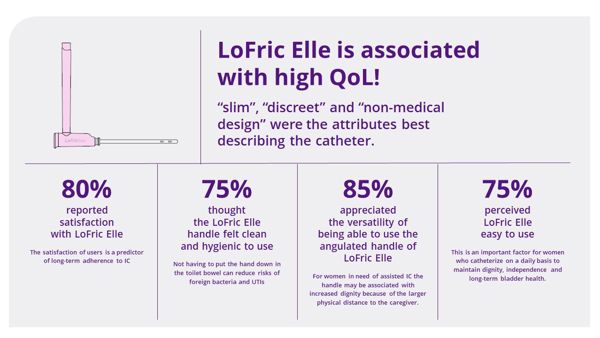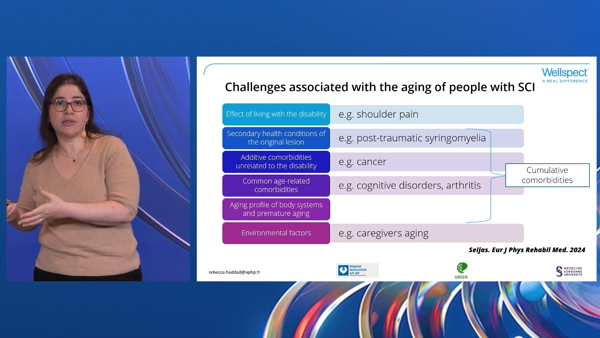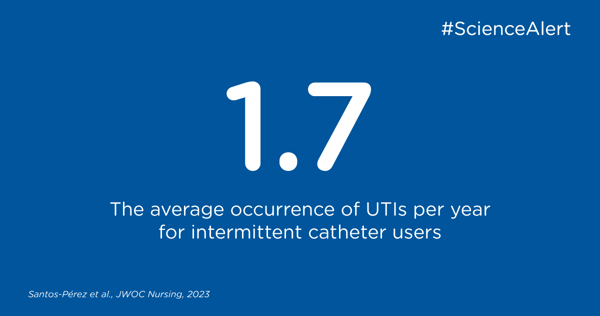Artikkelit
Wellspect Koulutus on laaja valikoima eritasoisia koulutusaineistoja perusopetusmateriaalista alkaen sinulle, joka tapaat virtsarakon ja suoliston toimintahäiriöistä kärsiviä potilaita.
Wellspect Koulutus on laaja valikoima eritasoisia koulutusaineistoja perusopetusmateriaalista alkaen sinulle, joka tapaat virtsarakon ja suoliston toimintahäiriöistä kärsiviä potilaita.
key:global.content-type: Artikkeli
Tämä selattava opas on suunniteltu auttamaan. Se on luotu yhteistyössä sairaanhoitajien kanssa ja noudattaa uusimpia EAUN-ohjeita. Sisältö on myös käyttäjien arvioima, jotta se olisi käytännöllistä ja relevanttia. Opit virtsatieinfektion riskitekijöistä, virtsarakon ja suoliston yhteydestä sekä siitä, milloin tulee ottaa yhteyttä terveydenhuollon ammattilaiseen. Oppaassa on videoita ja tarkistuslistoja, jotka auttavat sinua minimoimaan riskit ja ymmärtämään, milloin hakea ammattilaisen apua.

This data was presented at The International Spinal Cord Society (ISCoS) conference in Antwerp October 2024.

key:global.content-type: Artikkeli
Tässä webinaarissa puhuu tohtori Rebecca Haddad, joka on fysioterapiaan ja kuntoutukseen erikoistunut lääkäri, joka on keskittynyt geriatriaan Sorbonnen yliopistossa Pariisissa, Ranskassa. Hänen kliininen, tutkimus- ja opetustyönsä on omistettu ikääntyvien vammautuneiden hoidolle, ja hän keskittyy erityisesti virtsarakon vanhenemiseen.

key:global.content-type: Artikkeli
Tässä webinaarissa puhuu tohtori Gianluca Sampogna, urologinen kirurgi, joka työskentelee Milanon Niguardan sairaalan selkäydinvammayksikössä, joka on selkäydinvammaisten virtsarakon, suolen ja seksuaaliterveyden ongelmiin erikoistunut keskus. Hän johtaa seksuaaliterveysohjelmaa, joka tarjoaa monia ratkaisuja seksuaalineuvonnasta kuntoutukseen, lääkehoidosta leikkaukseen. Luento on englanniksi.

key:global.content-type: Artikkeli
Tässä webinaarissa puhuu tohtori Gianna Rodriguez, kliininen professori Michiganista Yhdysvalloista. Hän on selkäydinvammaohjelman johtaja Michigan Medicine -yliopiston fysiatrian ja kuntoutuksen osastolla Yhdysvalloissa. Luento on englanniksi.

key:global.content-type: Artikkeli
This article explores how the aging process affects bladder and bowel function in SCI patients and discusses the need for specialized management strategies.

key:global.content-type: Artikkeli
Tässä englanninkielisessä artikkelissa esitetään yhteenveto keskeisistä haasteista ja suosituksista, jotka on yksilöity ikääntyvien selkäydinvammautuneiden hoitoa koskevissa kliinisen hoitokäytännön ohjeissa (clinical practice guidelines). Lisäksi siinä tuodaan esiin puutteita ja parannusalueita nykyisissä ohjeissa.

key:global.content-type: Video
Tässä lyhyessä informatiivisessa videossa (n. 5 minuttia), Susanne Vahr, sairaanhoitaja ja vanhempi tutkija, jolla on lähes 30 vuoden kokemus urologian alalta, sukeltaa syvälle virtsatieinfektioiden monimutkaisuuteen (VTI).

key:global.content-type: Artikkeli
Niille, jotka turvautuvat toistokatetrointiin, epämukavuuden minimointi on keskeinen huolenaihe. Tässä lyhyessä videossa tutustutaan tieteen avulla sujuvampaan katetrointikokemukseen.

key:global.content-type: Artikkeli
This study provides valuable insights into the experiences of individuals undergoing IC that optimize patient care and support.

key:global.content-type: Video
Debbie Green, SIA:n selkäydinvamma-asiantuntija, käsittelee joitakin selkäydinvammautuneiden henkilöiden virtsarakon ja suolen hallintaan liittyviä ongelmia.

key:global.content-type: Webinaari
Erikoissairaanhoitaja Liam Rice käsittelee MS-taudin virtsarakon ja suolen hoitoon liittyviä keskeisiä kysymyksiä.
